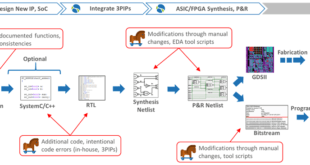In a resolute move toward building a technologically intensive force capable of facing next-generation threats, the Indian Army has laid out a roadmap anchored in innovation and self-reliance. As global conflict theaters evolve with digital and high-tech warfare, the Indian Army has identified 16 crucial technology clusters designed to reshape the military’s warfighting capabilities across land, air, cyber, and space domains.
From stealth systems and quantum communication to artificial intelligence (AI) and directed energy weapons (DEWs), the Army’s initiative seeks to embed technological foresight into its organizational DNA, thereby enhancing its ability to deter and defeat adversaries in an era of hybrid and multi-domain warfare.
The Tech-Driven Warfront: Why It Matters
Modern warfare is no longer confined to conventional arms or brute force. Instead, emerging technologies now dictate outcomes—where stealth, cyber dominance, unmanned systems, and rapid decision-making are as crucial as firepower. The Army’s technology cluster initiative addresses these very requirements, with a strong focus on both induction and absorption of niche, cutting-edge capabilities.
Key Technology Clusters and Their Military Importance
The Indian Army is undergoing a seismic transformation in its strategic posture—one defined not just by numbers or firepower, but by technological sophistication. In a bid to become a technologically-intensive force, the Army has identified 16 specialized technology clusters aimed at aligning India’s defense capabilities with the demands of future warfare. These clusters represent a concerted effort to absorb, indigenize, and operationalize cutting-edge technologies, many of which are still in conceptual or early development phases globally.
The inclusion of hypersonic propulsion (vehicles traveling at Mach 5+) and CBRN (Chemical, Biological, Radiological, Nuclear) defense reflects the Army’s recognition of next-gen threats. These technologies, supported by nanotech-driven biosensors for early-warning systems, aim to counter evolving forms of asymmetric warfare, including biological and chemical attacks.
Stealth and Anti-Stealth Technologies
In future combat scenarios, visibility will define vulnerability. Advanced stealth tech reduces the radar cross-section of vehicles and aircraft, making them near-invisible to enemy sensors. Equally vital are anti-stealth technologies—designed to neutralize these advantages. These are crucial in gaining the upper hand in contested airspaces.
The Army’s cluster on emerging stealth technologies envisions platforms embedded with metamaterials and radar-absorbing coatings, designed to minimize electromagnetic signatures. In parallel, anti-stealth sensing systems based on quantum radar, infrared hyperspectral imaging, and multistatic detection are being explored to detect otherwise invisible threats.
Sensing Technologies
From infrared to synthetic aperture radar (SAR), advanced sensors provide real-time situational awareness, target tracking, and precision engagement—key elements in network-centric warfare.
Energy and Propulsion Systems
Next-gen propulsion systems—such as hybrid-electric power and directed propulsion—enhance mobility, endurance, and stealth of ground and aerial platforms. Energy innovations also support directed energy weapons and portable power units for frontline soldiers.
Nanotechnology
Nano-engineered materials enhance armor strength, reduce weight, and offer self-healing capabilities. In munitions, nanotech enables miniaturized, highly effective warheads and sensors.
Hypersonics and CBRN Defense
Hypersonic systems—traveling at Mach 5+—overwhelm current defense mechanisms. Alongside, robust chemical, biological, radiological, and nuclear (CBRN) defense technologies are indispensable in mitigating unconventional threats.
Digital Dominance: Cyber, Space, Quantum & IoT
The Indian Army is accelerating its efforts to dominate the cyber and space frontiers, areas increasingly seen as force multipliers. Quantum-resistant encryption, 5G/6G-secured tactical networks, and AI-enabled cyber defenses are becoming critical as adversaries exploit zero-day vulnerabilities and deepfake tactics.
In the orbital domain, Low Earth Orbit (LEO) satellite constellations are being leveraged for real-time ISR (intelligence, surveillance, reconnaissance) and GPS-independent navigation. Meanwhile, blockchain technology is being piloted for supply chain resilience, ensuring secure, tamper-proof logistics in contested regions—especially crucial in the context of grey-zone warfare and non-kinetic attacks.
Cyber Warfare
With cyberspace a recognized war domain, this cluster focuses on offensive and defensive cyber capabilities, ensuring secure communication, denial of enemy networks, and AI-driven threat detection.
Space-Based Capabilities
Satellites for surveillance, reconnaissance, GPS navigation, and communication form the bedrock of modern warfare. The Army’s increasing interest in space-based assets reflects a strategic pivot to multidomain operations.
Quantum Technologies
Quantum encryption, computing, and sensing are anticipated to revolutionize secure communication and computing power, making it harder for adversaries to eavesdrop or crack codes.
IoT with 5G/6G Integration
Combining the Internet of Things (IoT) with ultrafast 5G/6G networks facilitates real-time data exchange across the battlefield, enhancing coordination among unmanned platforms, human soldiers, and command centers.
Unmanned Systems and Immersive Training Tools
The Army is embracing AR/VR technologies to revolutionize combat training. Simulations that replicate real-world scenarios in immersive environments enable troops to develop muscle memory and cognitive reflexes in high-stress conditions—without the physical risk.
Remotely Piloted Aircraft and Counter-UAS
Parallel advancements in Remotely Piloted Aircraft Systems (RPAS) and counter-drone technology are transforming surveillance and battlefield management. Indigenous systems like the Netra and Rustom UAVs are already patrolling India’s borders, while jamming and spoofing technologies are being fielded to neutralize hostile drones and electronic intrusions.
With drones becoming ubiquitous in surveillance and attack roles, both offensive unmanned aerial systems (UAS) and counter-UAS technologies are critical for asymmetric and full-spectrum warfare.
Directed Energy Weapons (DEWs)
The development of directed energy weapons (DEWs)—lasers and high-power microwaves—marks a paradigm shift in India’s air defense and anti-drone capabilities. These non-kinetic weapons offer precision targeting with minimal collateral damage. Inspired by global systems like the U.S. Navy’s HELIOS and China’s Silent Hunter, India is investing in indigenous DEWs for mobile and fixed installations.
Using focused energy such as lasers or microwaves, DEWs offer pinpoint accuracy with minimal collateral damage. Ideal for intercepting drones, missiles, or electronic systems.
Augmented Reality/Virtual Reality (AR/VR)
AR/VR platforms are revolutionizing military training, creating immersive combat simulations that sharpen soldiers’ tactical responses, decision-making, and situational judgment.
Securing Data and Logistics
Blockchain Technologies
By ensuring tamper-proof data exchange, blockchain strengthens cybersecurity, logistics tracking, and even weapons lifecycle management—minimizing counterfeits and delays.
Artificial Intelligence & Machine Learning
Artificial intelligence is no longer a support tool—it is becoming the central nervous system of modern military operations. AI/ML models are being tailored for everything from predictive threat analytics and automated mission planning to swarm coordination of unmanned systems.
AI/ML are pivotal in predictive threat analysis, autonomous systems, and decision-support tools. These technologies provide commanders with real-time, data-driven insights in dynamic combat situations.
Robotics and Unmanned Ground Vehicles (UGVs)
Robotics clusters are also driving innovation in combat engineering, mine detection, and CBRN reconnaissance, laying the groundwork for fully autonomous combat logistics and reconnaissance missions.
Robots are playing increasing roles in mine detection, logistics, surveillance, and even direct combat. Their deployment reduces risk to human life while expanding operational reach.
Loitering Munitions, Camouflage, and 3D Printing
Autonomous weapon systems are another key focus. Loitering munitions like India’s indigenous Nagastra-1 and unmanned ground/aerial vehicles (UGVs/UAVs) are reducing risk to soldiers while increasing operational tempo.
Loitering drones or “kamikaze drones” can hover before striking precise targets. Camouflage and concealment tech will thwart visual and sensor-based detection.
Complementing this is the Army’s push for additive manufacturing (3D printing) to create mission-critical components, field-replaceable parts, and lightweight armor in forward areas. This on-demand production capability, supported by local design hubs and command-level workshops, drastically shortens supply chain cycles and enhances mission readiness. Meanwhile, 3D printing allows for rapid prototyping, spare part fabrication, and infrastructure development in remote or contested zones.
Organizational Realignment: From Doctrine to Execution
To translate these technological ambitions into reality, the Army is undergoing a structural and procedural overhaul. Officers with expertise in fields like quantum computing, AI, robotics, and nanotech are being tapped to lead specialized R&D units. The Army Design Bureau (ADB) is being expanded through command-level ADB Cells, creating a decentralized innovation ecosystem that can work closely with startups, academia, and defense firms.
The April 2023 Army Commanders’ Conference underscored the importance of procedural agility—a commitment to fast-tracking trials, fostering public-private partnerships, and operationalizing iDEX (Innovations for Defence Excellence) innovations for frontline deployment.
A Strategic Push Toward Self-Reliance
The Indian Army is not just inducting foreign technologies—it’s cultivating homegrown innovation. The Army Design Bureau (ADB) and its planned regional cells will connect military needs with industry and academia, fast-tracking trials and operationalization of promising technologies.
At the Army Commanders Conference in April, it was emphasized that procedural transformation is needed to absorb niche technologies effectively and elevate indigenous R&D capabilities.
Conclusion: Readying for Tomorrow’s Wars
The Indian Army’s establishment of 16 technology clusters is a visionary step toward achieving Atmanirbharta (self-reliance) in defense technology and developing future-ready warfighting capabilities. This initiative addresses not only conventional threats from adversaries like Pakistan and China but also prepares India for multi-domain conflicts—where battles are fought as much in code and algorithms as they are with bullets and bombs.
By investing in these 16 critical technology clusters, the Indian Army is positioning itself for a future where agility, precision, and information superiority will dictate success on the battlefield. This tech-first posture not only enhances combat effectiveness but aligns with India’s broader vision of Atmanirbhar Bharat (self-reliant India)—ensuring that future wars are fought with tools developed at home.
As global militaries compete for dominance in the “gray zone” of hybrid conflict, India’s ability to merge indigenous innovation with operational agility will determine its place among the world’s foremost military powers. The battlefield is changing. And with this bold, tech-centric strategy, so is the Indian Army.
In the wars of tomorrow, it’s not just steel and soldiers that will win—it’s the synergy of silicon, software, and strategic intent.
 International Defense Security & Technology Your trusted Source for News, Research and Analysis
International Defense Security & Technology Your trusted Source for News, Research and Analysis


